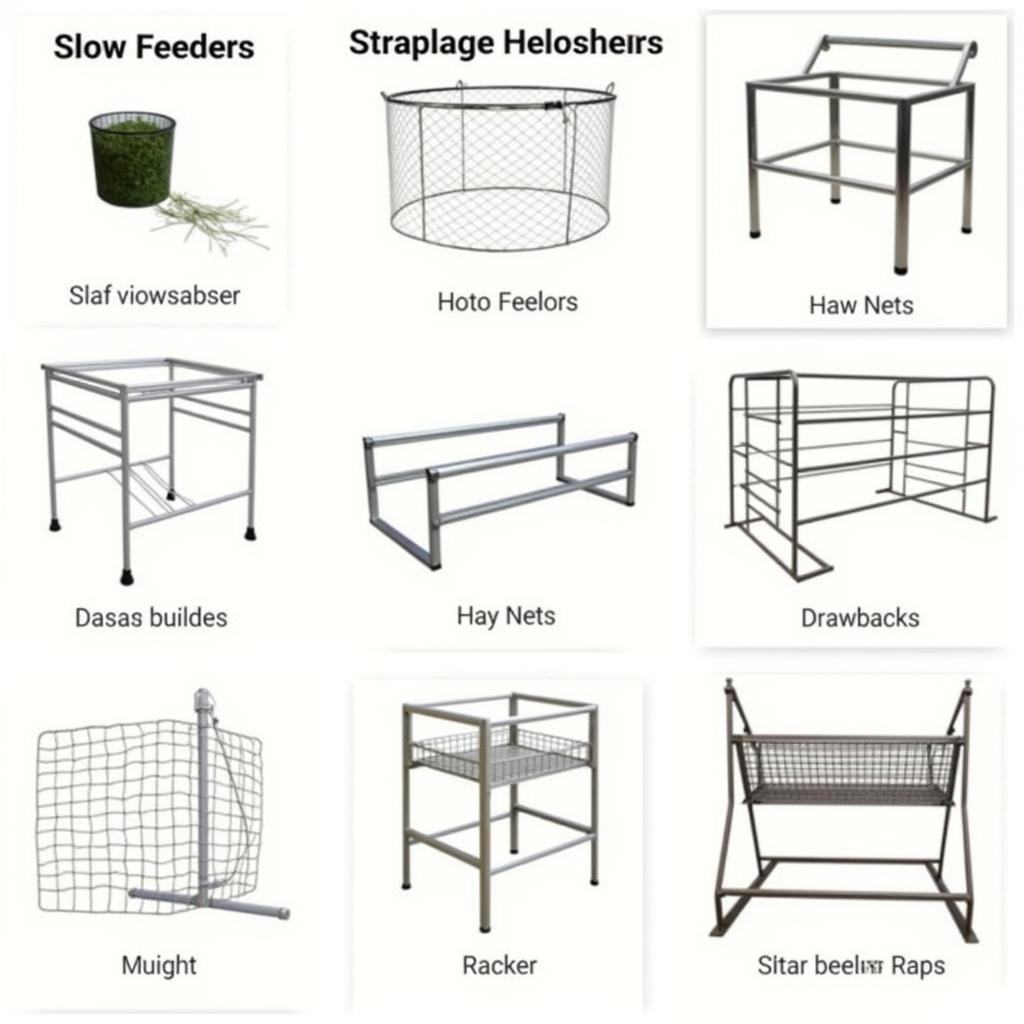A well-designed Horse Feeding Station is crucial for your horse’s health and well-being. It ensures efficient feeding, minimizes waste, and promotes a safe environment for both horses and handlers. This comprehensive guide will cover everything you need to know about creating the perfect horse feeding station, from choosing the right location to selecting the best feeders.
Location, Location, Location: Choosing the Right Spot for Your Horse Feeding Station
The location of your horse feeding station is the first and perhaps most important decision. Consider factors like drainage, accessibility, and proximity to water sources. A well-drained area prevents mud and manure buildup, reducing the risk of disease. Easy access for both horses and humans simplifies feeding chores. Ideally, the feeding station should be close to a water source, encouraging horses to drink after eating. A dry, slightly elevated area is perfect for a feeding station, minimizing mud and promoting cleanliness. Avoid placing the station in low-lying areas that collect water.
Types of Horse Feeding Stations: From Basic to Bespoke
There are various types of horse feeding stations, from simple setups to more elaborate designs. The best choice depends on your individual needs and budget. A basic setup might involve a few strategically placed hay feeders and buckets. More complex systems might include a dedicated feed room, individual stalls with built-in feeders, or even automated feeding systems.
Hay Feeders: Minimizing Waste and Maximizing Nutrition
Choosing the right hay feeder is crucial for minimizing waste and ensuring your horse receives adequate nutrition. Different types of hay feeders cater to different needs. Slow feeders, for example, are designed to mimic natural grazing patterns, reducing boredom and preventing overeating. They also minimize hay waste, saving you money in the long run. Other options include hay nets, racks, and mangers. Consider your horse’s individual needs and preferences when selecting a feeder. What works for one horse may not work for another.
 Comparing Different Horse Hay Feeders
Comparing Different Horse Hay Feeders
Remember to check your horse’s hay feeder for pasture regularly and ensure it is well-maintained. A well-maintained feeder ensures the safety and health of your horse. If you’re wondering how many acres to have a horse, remember to factor in space for a proper feeding station. You might also consider setting up a dedicated feed room for horses for easier storage and organization of feed.
Feeding Frequency and Portion Control: The Key to a Healthy Horse
Establishing a regular feeding schedule is essential for your horse’s digestive health. Horses thrive on routine, and consistent feeding times help regulate their digestive system. Divide your horse’s daily ration into several smaller meals, rather than one or two large ones. This mimics their natural grazing behavior and helps prevent digestive upset. A horse with large stomach still benefits from smaller, more frequent meals.
Water: The Often Overlooked Essential
Providing fresh, clean water at all times is crucial. Water is even more important than food for a horse’s survival. Ensure your horse has access to a clean water source, whether it’s a trough, bucket, or automatic waterer. Check the water source regularly to make sure it’s clean and functioning properly.
A dedicated manger horse can provide a designated space for feeding, improving efficiency. Consider adding a manger to your feeding station for easier grain feeding.
Maintaining Your Horse Feeding Station: Cleanliness is Key
Regular cleaning is vital to prevent the spread of disease and maintain a healthy environment. Remove manure and uneaten hay daily, and disinfect feeders and water troughs regularly. A clean feeding station not only promotes your horse’s health but also keeps your barn or pasture looking tidy.
Conclusion: Creating the Perfect Horse Feeding Station
Creating a well-designed horse feeding station is an investment in your horse’s health and happiness. By considering factors like location, feeder type, feeding frequency, and cleanliness, you can create a safe and efficient feeding environment for your equine companion. A well-maintained horse feeding station ensures optimal nutrition and contributes to your horse’s overall well-being. Remember to consult with your veterinarian or an equine nutritionist for personalized advice tailored to your horse’s specific needs.
FAQ
- What is the best type of hay feeder for my horse?
- How often should I clean my horse’s feeding station?
- Where should I locate my horse feeding station?
- How much water should my horse drink daily?
- What are the signs of a horse with digestive problems?
- How can I prevent my horse from wasting hay?
- What are the benefits of a slow feeder?
Need more assistance? Contact us at Phone Number: 0772127271, Email: [email protected] Or visit us at: QGM2+WX2, Vị Trung, Vị Thuỷ, Hậu Giang, Việt Nam. We have a 24/7 customer support team.